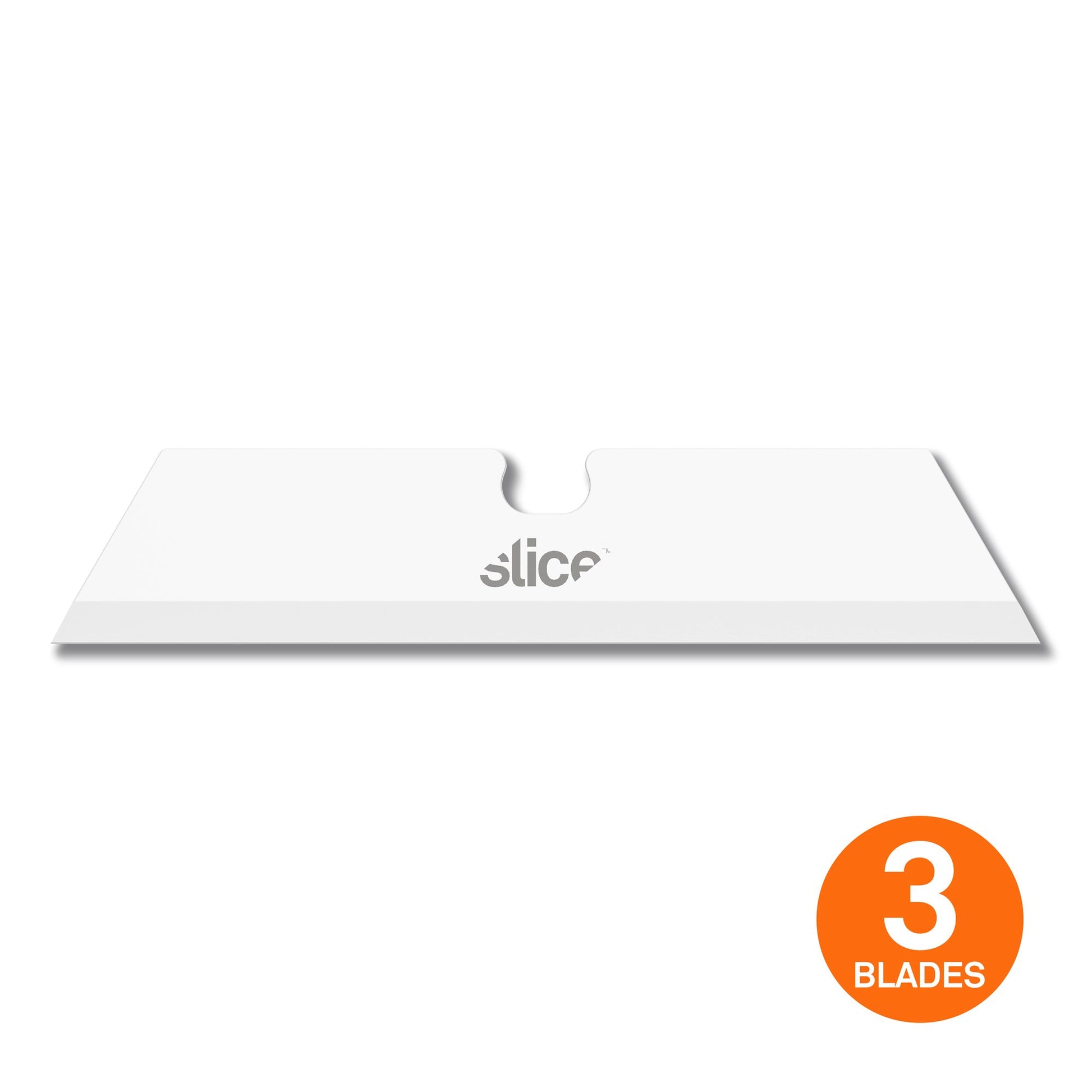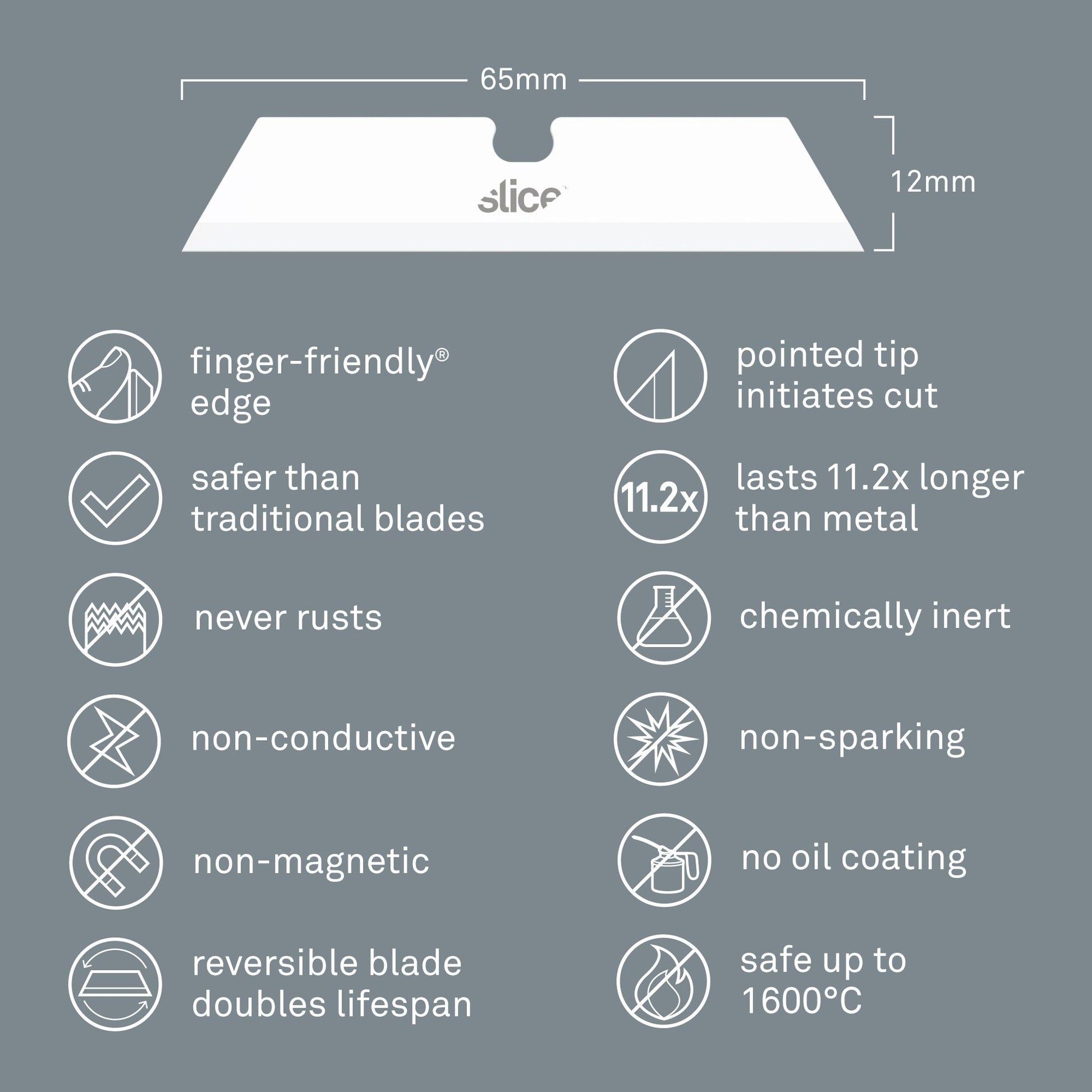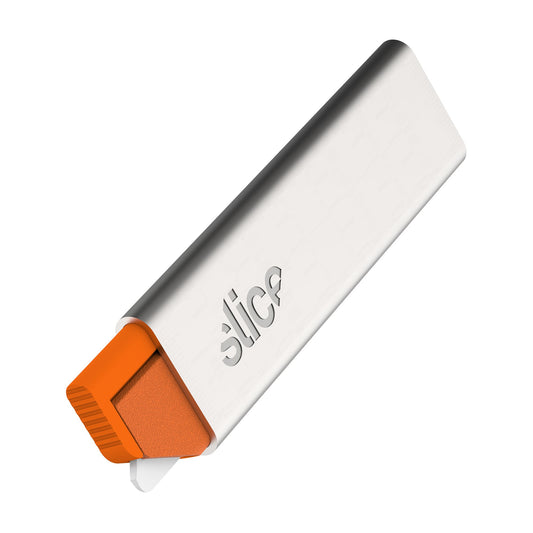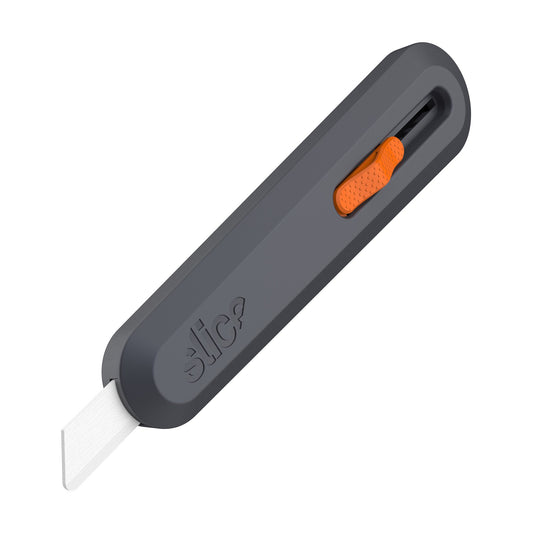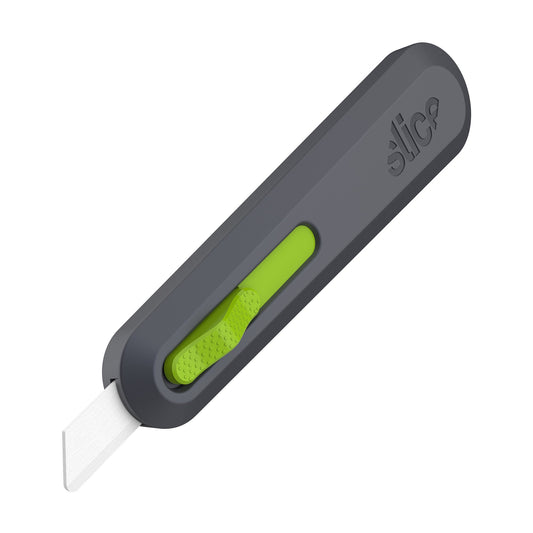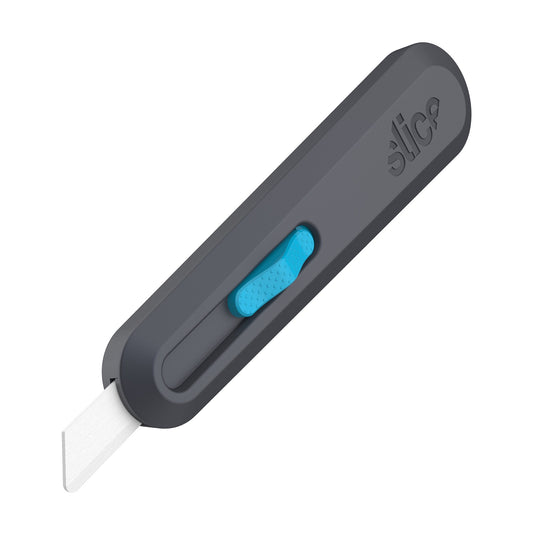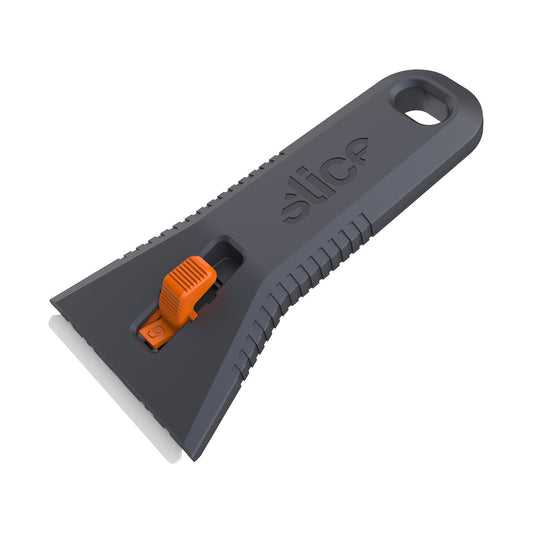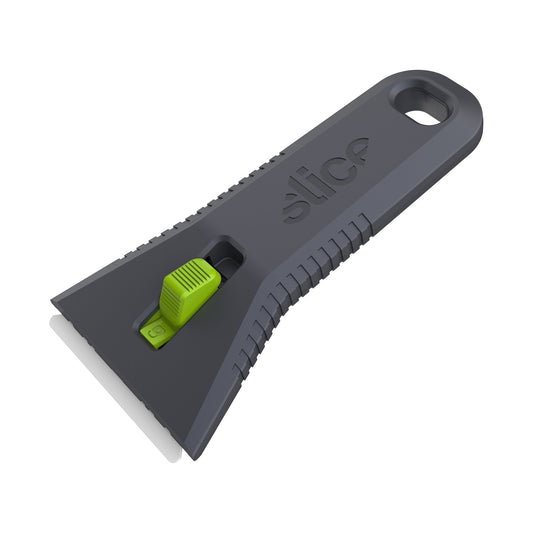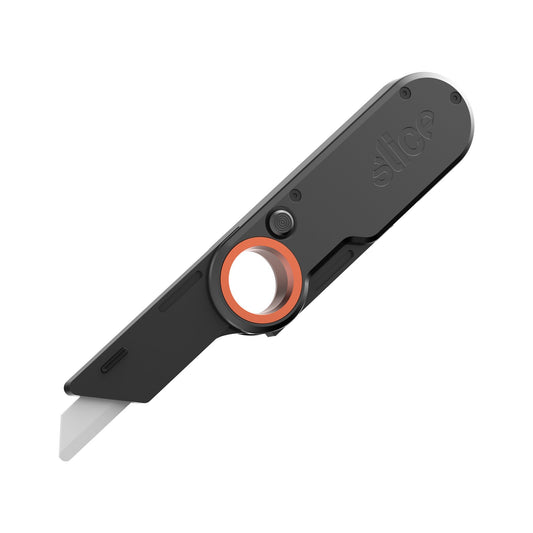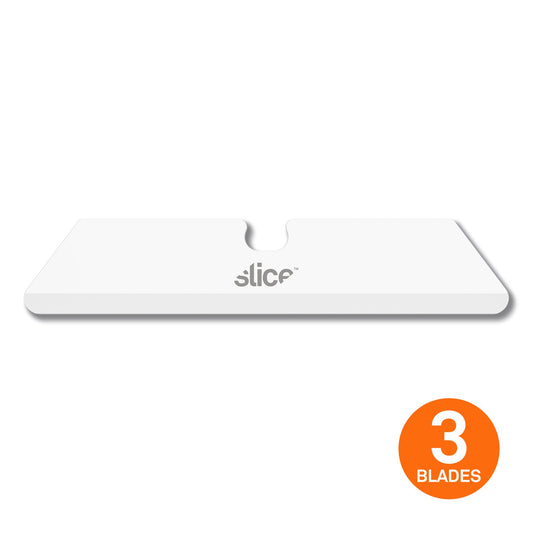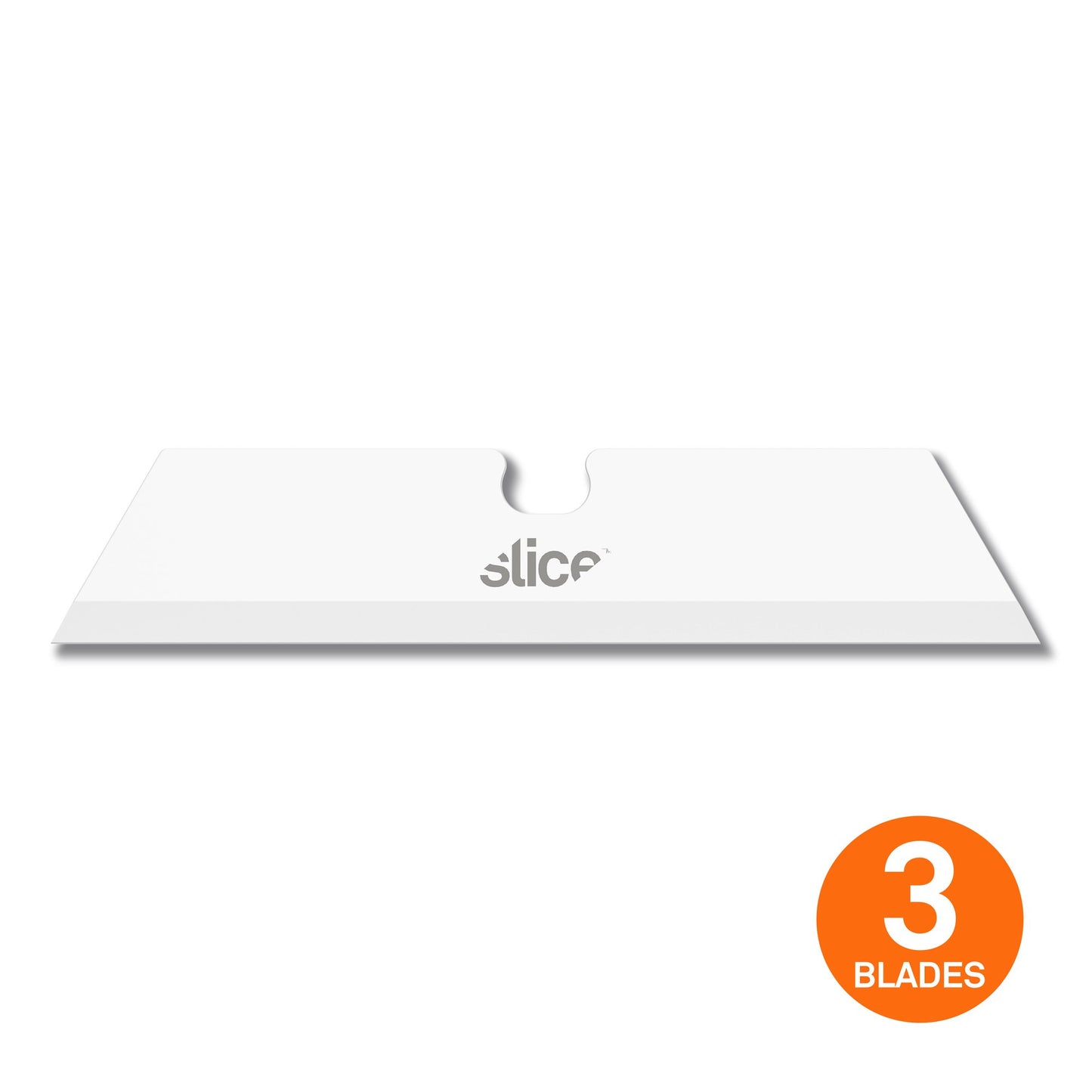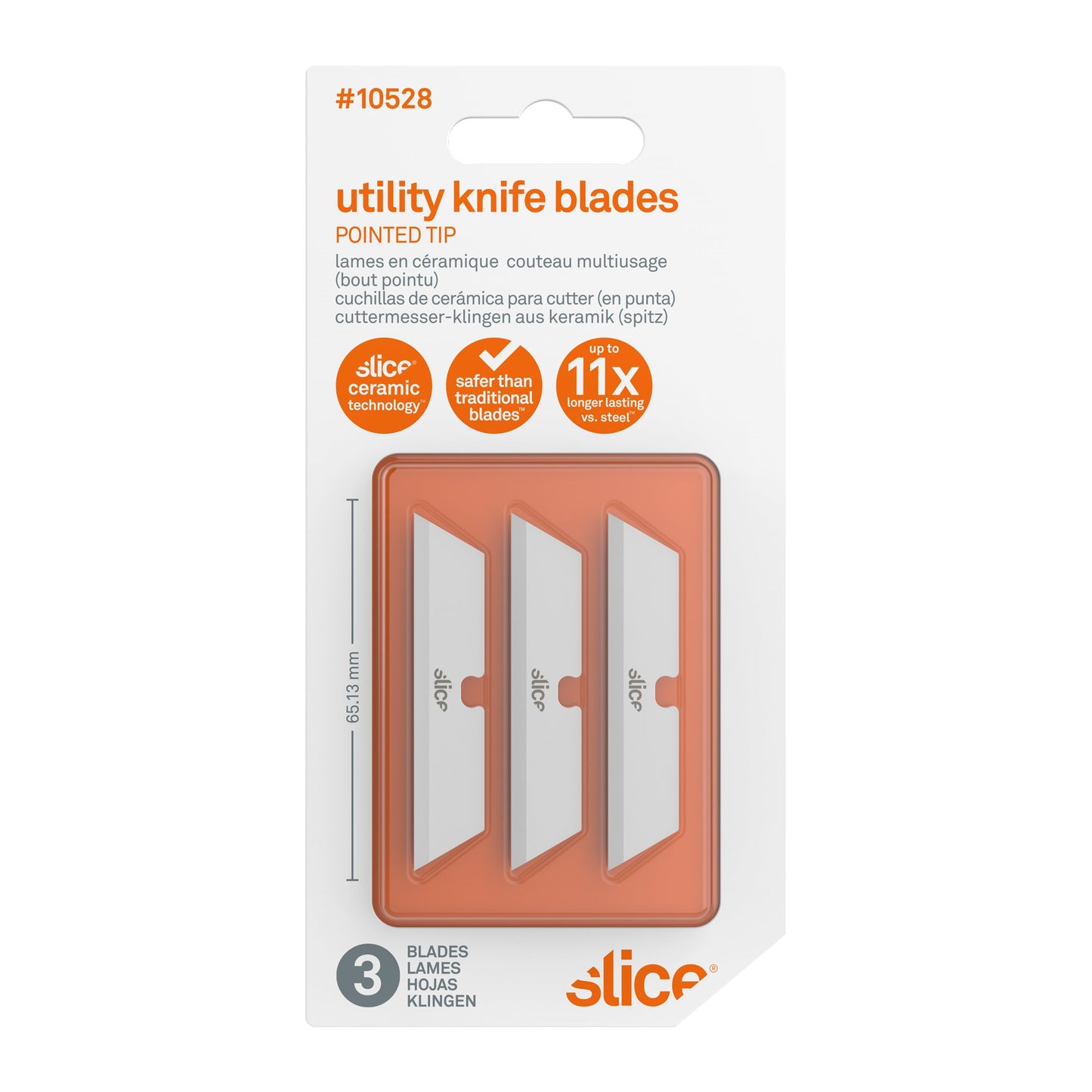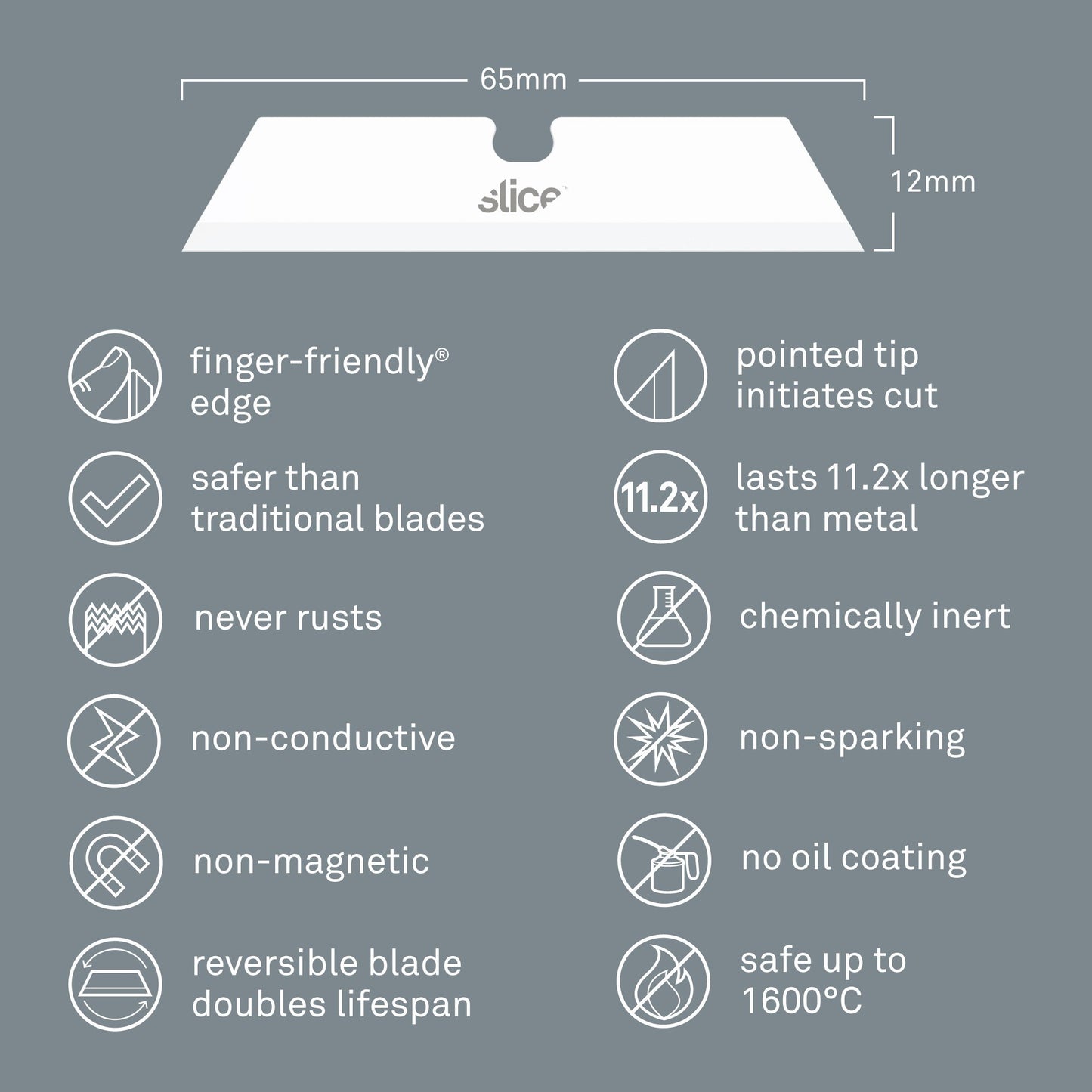Ostrza do noży uniwersalnych (Szpiczaste)
SKU #10528
Ostrza do noży uniwersalnych Slice 10528 wyróżniają się szpiczastą końcówką, dzięki której przebicie materiału i rozpoczęcie cięcia jest niezwykle proste. Tak jak w przypadku wszystkich bezpiecznych ostrzy ceramicznych Slice, nasze ostrza 10528 są nieiskrzące, niemagnetyczne, chemicznie obojętne, bezpieczne w użytku do 1600 stopni Celsjusza i nigdy nie rdzewieją. Powyższe ostrze jest kompatybilne ze wszystkimi nożami uniwersalnymi Slice.
- Rodzaj ostrza: wymienne ostrze ze szpiczastą końcówką
- W opakowaniu trzy dwustronne ostrza
- Kompatybilne narzędzia: 10477, 10479, 10550, 10554, 10558, 10562, 10563, 10564, 10585, 10591, 10593
- Krawędź finger-friendly o nawet do 11 razy dłuższej żywotności
- Mniej skaleczeń i mniej wydatków
- Nieiskrzące, nieprzewodzące prądu elektrycznego i niemagnetyczne
- Bezpieczne w użytku do 1600 stopni Celsjusza
- Chemicznie obojętne, nigdy nie rdzewieje
- Niewymagająca narzędzi zmiana ostrza
- Rzadsza zmiana ostrza = mniej skaleczeń
- SKU #10528
Product Specifications
Product Specifications
Cutting Depth:
Material: zirconium oxide
Dimensions: L x W x H
Weight: 0.06 lbVideos
-
Cut Roof Membrane Safely With Slice
-
How to Cut Pallet Wrap and Banding
-
How to Cut Ceiling Tile: Safety First
-
How to Cut Corrugated Plastic Sheets Using Slice Tools
-
How to Cut Drywall Safely With Slice
-
How To Cut Mylar Stencils
-
Cutting Ram Board®
-
How to Cut Super Sacks® Easily and Safely
-
How To Cut Window Screen Using Slice Tools
-
The Correct Technique to Cut Plastic Banding
-
Blade Replacement for the Folding Utility Knife
-
Replacing Carton Cutter Blades
-
Blade Replacement on Slice Utility Scrapers
-
Blade Replacement for Slice Utility Knives
Compatible Products
FAQ
Are Slice Ceramic Utility Knife Blades Safer?
Compared with standard blades (that’s steel or traditional ceramic), the answer is yes. When you search “how to change a utility knife blade”, you learn that the process is often dangerous. Overly sharp blades leave your hands vulnerable to injury.
Because we developed a proprietary finger-friendly edge for our ceramics, handling a Slice ceramic blade is less dangerous than handling a traditional ceramic or steel utility knife blade. Our manufacturing process creates an edge that effectively cuts material but is safe to the touch.
Slice utility knife replacement blades are made from hard zirconium oxide. That, along with our manufacturing process, is why our blades hold their edge, on average, 11.2 times longer than steel. This means you’ll be handling your blade much less often, which also reduces the chance of injuries.
Because we developed a proprietary finger-friendly edge for our ceramics, handling a Slice ceramic blade is less dangerous than handling a traditional ceramic or steel utility knife blade. Our manufacturing process creates an edge that effectively cuts material but is safe to the touch.
Slice utility knife replacement blades are made from hard zirconium oxide. That, along with our manufacturing process, is why our blades hold their edge, on average, 11.2 times longer than steel. This means you’ll be handling your blade much less often, which also reduces the chance of injuries.
Which Type of Utility Knife Blade Should I Use for the Job?
The best utility knife blades will depend on your application. For most cuts, our 10526 (rounded tip) blades will do the job. The rounded tip provides an added layer of safety against accidental puncture wounds. For some materials, though, a pointed tip is required. A pointed tip initiates a clean cut with a piercing action and is best used for materials like shrink wrap, laminating sheets and plastic banding.

